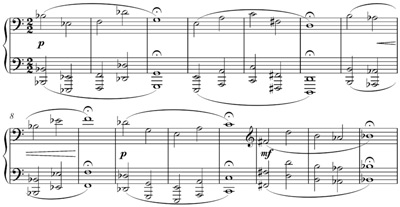Twentieth Century (1910-present): Introduction

The twentieth century is so full of new musical ideas and compositional techniques that it’s impossible to characterize as a single style. Composers drew from the past, using the traditional forms and styles of the Classical era, or the expressive large orchestras and nationalistic traditions of the Romantic era. Many composers traveled the world, integrating sounds and instruments they encountered in other countries, far from the United States and Europe. Still other composers experimented with the very nature of sound and the definition of “music,” They broke down to its most simple elements, creating a style known as minimalism. The twentieth century has more variety of sounds than any other period in history. Mass production of instruments and music publishing, combined with new audio recording technology, meant that music was now easier to produce and distribute to a much wider audience than before. Not only this, but the gap between trained, classical musicians and “popular” musicians was wider, as it was in in medieval times between the church and folk music.
Historical Themes
- Global advances in technology
- The advent of faster communications such as the telegram and later telephone
- The growth and eventual decline of totalitarian culture in Europe
Musical Context
- Ambivalent attitudes toward the musical past
- A widening gap between art (classical) and popular music
- The advent of sound recording and computer-based music
- The birth of a World Music culture
World Events
- The sinking of the Titanic
- World War I, World War II, Vietnam War, Korean War, War in Iraq, Cold War
- Prohibition, War on Drugs
- Drastic changes in values (extremes between overly-strict mindsets and very liberal mindsets)
- Split in religious and scientific belief systems (for the first time in the history of the world, the two have also managed to come together to create new religious beliefs or philosophies—motivated by the beliefs of the Romantic era)
- The invention of the radio, television, and Internet to instantly inform the masses
- Larger than life peacemakers—Ghandi, Mother Theresa, and others
- Fascist leaders such as Adolf Hitler, Stalin, and Mussolini, who stifled creativity in their countries and whose rule brought death, destruction, and tragedy across Europe
- Franklin D. Roosevelt, Winston Churchill, John F. Kennedy and other Presidents and leaders from around the world